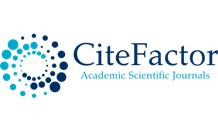Subject Area
Degenerative, Cervical spine
Article Type
Original Study
Abstract
Background Data: Anterior cervical discectomy and fusion (ACDF) has become a standard and a highly successful procedure for degenerative cervical disc disease associated with radiculopathy or myelopathy. In addition to graft complication, multilevel cervical discectomy is often combined with plate fixation to maintain the spinal curvature, and increasing the graft fusion rate but this also may carry risk of complications. Study Design: Prospective descriptive clinical case study Purpose: To evaluate the safety and efficacy of standalone PEEK cages filled with bone graft substitute in treatment of multi-level cervical disc disease. Patients and Methods: Ninety one patients underwent multiple levels ACDFfor a total of 239 levels. Mean follow-up was 24 months. Clinical outcomes were evaluated using Visual Analogue Scale (VAS) and Oswestry Disability Index (ODI); cervical lordosis and cervical fusion status was assessed on X-ray. Statistical analysis was performed using a dependent t-test using SPSS V.12.0 (P<0.05). Results: The fusion rate was 97.9% (234 out of total 239 levels operated). Clinically, the mean ODI scores were 50.49 (Range, 30 to 69) preoperatively and16.89 (Range, 0 to 38) postoperatively (P=0.000). All patient have significant pain reduction with mean VAS scores decreases from 6.52 (Range, 4 to 9) preoperative to 1.87 (Range, 0 to 5) postoperatively (P=0.000). Cervical lordosiswas preserved and neurological status was improved. No cage migration or cage breakage happened. Conclusion: ACDF using standalone PEEK cages filled with Calcium triphosphate bone graft substitute is a safe and efficient method for treatment of multiple levels cervical disc disease. It preserves cervical lordosis and obviates the complications related to iliac crest grafting and screw-plate fixation. (2013ESJ045)
Keywords
cervical spine, Multi-level cervical disc disease, ACDF, PEEK cage
How to Cite This Article
El-Meshtawy, Mohamad; Elnady, Belal; Hassan, Khaled; Ahmad, Hamdan; Hassan, Mohamad; Fouad, Mahmoud; and Abo El-Fadl, Amr
(2013)
"Two or More Levels Anterior Cervical Discectomy and Fusion (ACDF) Using Stand-Alone PEEK Cages Filled With Bone Graft Substitute,"
Advanced Spine Journal: Vol. 6
:
Iss.
1
, Article 5.
Available at: https://doi.org/10.21608/esj.2013.3817




















